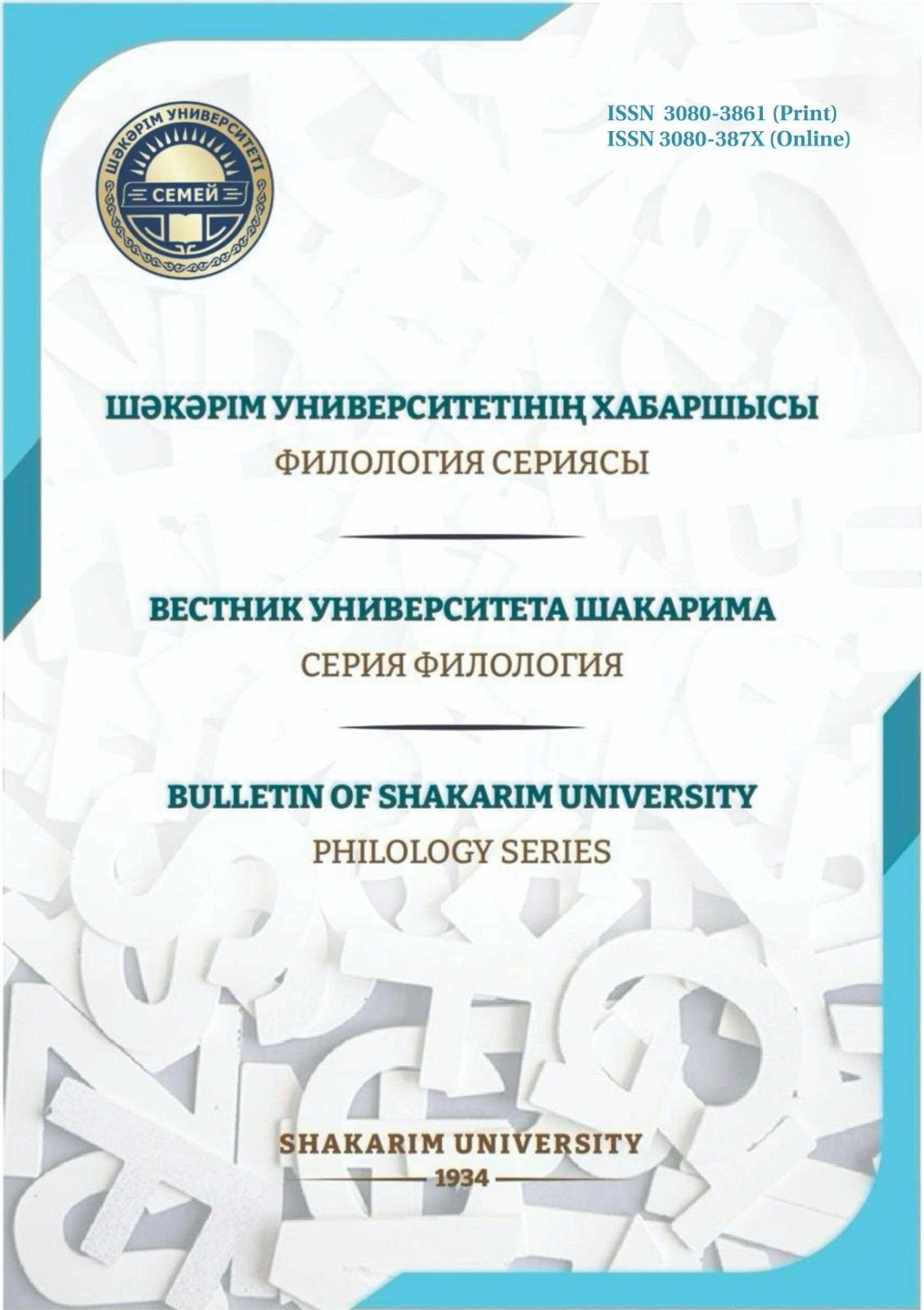DEVELOPMENT FEATURES OF GENDER LINGUISTICS IN KAZAKH LINGUISTICS
Keywords:
Gender linguistics, gender stereotypes, social roles, lexical units, intercultural comparison, gender norms, linguistics.Abstract
Abstract. This article examines the development features of gender linguistics in Kazakh linguistics. Gender linguistics, as a newly emerging field of linguistic science, aims to identify the linguistic behavior characteristics of women and men in the Kazakh language, as well as gender stereotypes and social roles. By analyzing the social, cultural, and historical aspects of gender classification in language, the main goal of the article is to identify gender linguistic phenomena in the Kazakh language and study their development and current state. The study compares the gender-specific features and structural aspects of the Kazakh language. Special attention is paid to the lexical units, phraseological expressions, and metaphors used in reference to women and men, analyzing their roles in the language and examining the dynamics of their changes over time and space. Additionally, the article emphasizes the inter-cultural aspects of gender norms, allowing for a comparison of gender phenomena in the Kazakh language within the context of other languages and cultures. The methods of analysis, comparison, and synthesis are employed in the research. Drawing on the works of prominent representatives of Kazakh linguistics, the theoretical foundations and practical aspects of gender linguistics are examined. This study contributes to identifying the development and changes of gender aspects in the Kazakh language and helps define the future directions of research in this field.
Downloads
Published
Issue
Section
License
Copyright (c) 2025 The editorial staff of the journal follows the copyright law of the Republic of Kazakhstan and relevant international agreements. The authors retain their copyright and provide the journal «Bulletin of Shakarim University. Series of Historical Sciences» right of first publication of the manuscript. The author has the right to copy and distribute the material in any medium and in any format, subject to appropriate reference to the journal. Readers and users can freely copy, distribute and adapt the material, provided that the author of the work is indicated and a link to this journal is provided. Copyright presupposes the integrity and responsibility of each co-author who made a significant contribution to the writing of the article. The author has the right to store his publications in an institutional or other repository of his choice, provided he provides the appropriate link to the journal’s website.

This work is licensed under a Creative Commons Attribution-NonCommercial 4.0 International License.
Copyright presupposes the integrity and responsibility of each co-author who made a significant contribution to the writing of the article.
The author has the right to store his publications in an institutional or other repository of his choice, provided he provides the appropriate link to the journal’s website.

